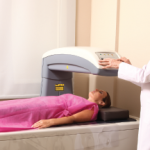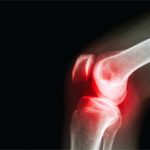Regarding the number of sets and frequency, she emphasized that the most benefit (about 70%) comes from the first set. She tends to recommend two sets, she said, with a goal of three times a week. However, if people are short on time, she said performing one set twice a week still provides benefit.
She also emphasized the need to counsel patients about what not to do. “Movement to avoid is movement [that risks] a lumbar disc herniation,” she said, such as trunk flexion, especially with twisting and picking up even just a light weight. “This type of movement can cause a vertebral compression fracture for those at risk.”
 Post-Menopausal Women
Post-Menopausal Women
For post-menopausal women, evidence supports the use of an exercise program that combines impact exercise with resistance training, with studies showing a benefit of this combined approach on maintaining bone both at the hip and lumbar spine.3 The same type of exercises recommended for premenopausal women are recommended in postmenopausal women, Dr. Bilek said, with the goal of preventing a decline in bone health.
People with Osteoporosis
Dr. Bilek stressed that people with osteoporosis are at higher risk of incurring a vertebral compression fracture, and therefore, their exercises should focus on strengthening the posterior thoracic musculature and altering exercise to prevent trunk flexion with overload.4
High-impact exercises should be eliminated, she said, although lunges and step classes are fine if performed safely and correctly. For example, the correct way to lunge is to use the hip muscles to support your body weight. When doing step exercises, you need good lower leg biomechanics to strengthen the muscles.
For resistance training, people with osteoporosis should work on strengthening all muscle groups similar to the recommendations for pre- and post-menopausal women, but the intensity should be altered based on risk as measured by T-score, fracture history, the presence of inflammatory disease and other factors.
Dr. Bilek cautioned, however, that women with more severe osteoporosis should seek guidance on exercise from a physical therapist or other skilled provider.
Mary Beth Nierengarten is a freelance medical journalist based in Minneapolis.
References
- Babatunde OO, Forsyth JJ, Gidlow CJ. A meta-analysis of brief high-impact exercises for enhancing bone health in premenopausal women. Osteoporos Int. 2012 Jan;23(1):109–119.
- Martyn-St James M, Carroll S. Progressive high-intensity resistance training and bone mineral density changes among premenopausal women: Evidence of discordant site-specific skeletal effects. Sports Med. 2006;36(8):683–704.
- Zhao R, Zhang M, Zhang Q. The effectiveness of combined exercise interventions for preventing postmenopausal bone loss: A systematic review and meta-analysis. J Orthop Sports Phys Ther. 2017 Apr;47(4):241–251.
- Giangregorio L, Katzman WB. Exercise and other physical therapy interventions in the management of osteoporosis. In Dempster DW, Bouxsein ML, Cauley JA, Cosman F (eds.). Marcus and Feldman’s Osteoporosis (fifth edition, chapter 69).


